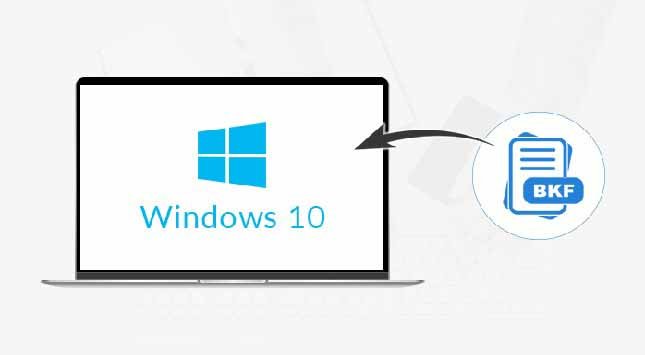A throwback to May 2017, the world stood witness to what was the biggest cyber attack in the history of the Internet when a ransomware called WannaCry wreaked havoc through the web rooting from Europe. In the very first hour, the ransomware affected around 200,000 machines. The attack did not sparely Fortune five companies and big billion brands like the National Healthcare System, Telefonica, and Renault were left crippled by the attack. Ever since ransomware has been a growing threat to the world.
Even though the internet militia tries to guard the web from such threats, ransomware like Cryptolocker continues to loom large with the perpetrators targeting the users in the US and the UK. That brings us to the question –
How Ransomware Works?
Most ransomware use backdoor Trojans, spammers, and ad-clickers as the abettors. The malware authors and perpetrators generally send spam emails targeting different groups. And the most dangerous thing about ransomware is that there are no geographical barriers that put a limit on the impact it has on internet users.
A ransomware that has sourced from America can hit people beyond continents. Also, the scale of operation is diverse, targeting home users, small-medium businesses as well as enterprises. The malware can also spread via external hard-drive devices like USB thumb drives. It can also encrypt a folder saved in the Cloud.
So what can you do about it?
7 Ways to Keep your System Safe from Ransomware
If you have the will, you have the way. In this case, the protectors of the web are the ones who have found out away. They have toiled to come up with the following tactics that will help you have the last laugh over such vicious attacks.
1. Back Up your Data
The MVP that can help you score against a ransomware attack is back-up. Imagine completing 90% of an assignment and then losing the file due to malware. That would imply that you are missing the deadline or getting it finished by an assignment to help online companies. But there is a better solution to this mess.
By keeping all your data stored in a back-up file, you will be able to restore any lost file (or for that matter your system) like it never really happened. So, make sure that you back-up regularly. You can use an external drive (preferably one that you do not use on your system often) to save your files in.
2. Check for Hidden File-Extensions
Most ransomware arrive with files that have hidden extensions and unique file names. You just need to have an eye to trace files that are tailed with extensions. For example, the ransomware Cryptolocker generally attacks with files that are named with the extension “.PDF.EXE”.
If your system is running on Windows, then the chances are high that you will not be able to detect hidden files just by looking at the names. This is because Windows has a default setting of hiding known file-extensions. I suggest that you re-enable the ability to see the full name of the file so that you can spot file-extensions and beware of suspicious files.
3. Filter Your Email
Since malware authors use bulk emails to attack systems, the need to use filters on your email account is paramount. You can set a filter that allows your gateway mail scanner to stop files with extensions. You can also deny the mail server the ability to send or open .EXE files.
You can do this using ZIP files or via cloud services. For example, in the case of Gmail, all you have to do is put the search word .EXE in the search box and create a filter using the word (you will find it in the bottom right corner of the dropdown box).
4. Disable RDP
Ransomware perpetrators often target machines that use Remote Desktop Protocol (RDP) to gain remote access to a desktop. Since it can spread via RDP ports, I suggest that you disable RDP if you do not require it. The process of disabling RDP is different for the many versions of Windows. Here are the guides for the types of Windows that are in use today.
5. Patch Your Software
Malware tends to attack systems that run on outdated software because of the several vulnerabilities. An outdated system is infested with bugs that malware finds easy to encrypt. A significant step to avoid ransomware attacks would be by updating your software often. System vendors like Microsoft release updates on every second Tuesday of a month. However, if a sharp memory is not one of the things that you can boast of, then I suggest that you enable auto updates.
Did you know that ransomware perpetrators disguise viruses as software update notifications? I recommend that you enable permission keys on the updates.
6. Use a Reliable Security Suite
If you really want to protect your system from ransomware, then you must leave no stone unturned. And one such stone towards infallible security is to install anti-malware software to identify any such threats. Malware perpetrators usually break away from the mould and send out new variants so that you cannot detect the Trojan files. This makes it all the more important that you add on to the layers of protection.
Like a security blanket, you can also install a software firewall so that the malware is detected when it tries to connect with its Command and Control server to receive instructions about encryption of system files.
7. Disconnect from WiFi Immediately
There is no imbroglio that you cannot get out of with a presence of mind and protecting your system from ransomware is one of them. In case you run a file before you could suspect the presence of malware, then act very quickly and disconnect from the network immediately.
This may sound an amateurish move, but a snapped connection may mitigate the damage by obstructing communication between the file and the server before it corrupts your files. But do not bank a lot on this technique since this is more of a matter of luck. Instead, use it as a last resort.
Takeaway Points:
Ransomware can damage the encrypted files beyond repair. But if you have prepared your system for the attack beforehand, then you will be able to avoid the plight. You can use the above tips to keep your system and files safe and remain unperturbed of ransomware ambushes. It is just not about what you should do. Here are some of the things that you should not do if you want your system free of ransomware.
- Do not pay the ransom since there is no guarantee that you will regain access to your files.
- Do not postpone contacting the IT department if you continuously receive suspicious calls.
- Do not give away sensitive business or personal information through emails or unsolicited phone calls.
- Do not postpone contacting the IT department if you continuously receive suspicious calls.
P.S. – In case you are traveling, make sure that you alert your IT department. If you are going to use an open-source WiFi, then I suggest that you use a trustworthy VPN only.






